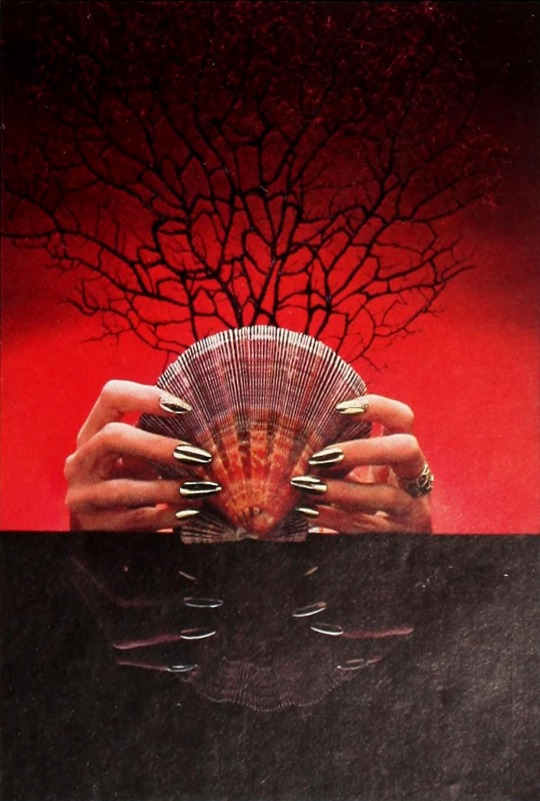#Kohanim
Text

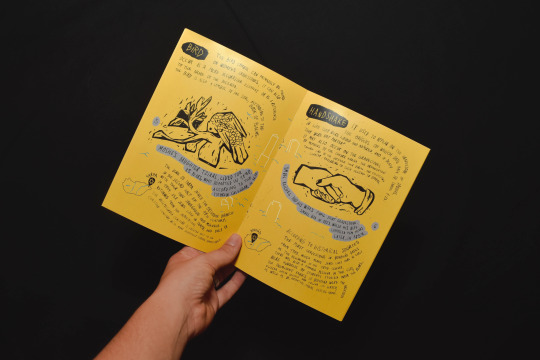


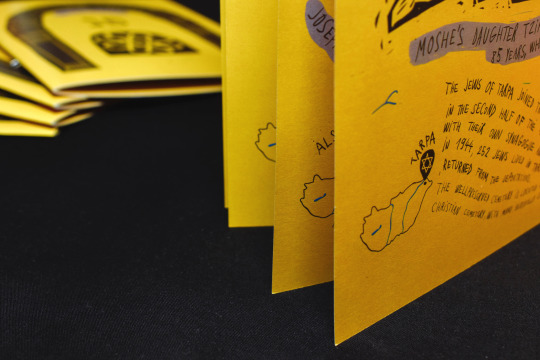
Here is the Art Of Abandoned Jewish Cemeteries of Hungary Zine that we worked on last year, its finally finished and ready for you to order and read it. We did a lot of research and work into this lovely little piece and we totally love it!!
You can order it here through Etsy, only a few in stock now!
Couple of words, why is it important to us, and in general:
We created this zine with goals in mind – our one aim was to present and preserve at least a small part of the very rich cultural and and artistic values that we can find in the jewish cemeteries of Hungary. Our goal is to introduce the reader to the fascinating and interesting world of symbols of the jewish cemeteries, and also to preserve the memories of the former rural jewish communities of the country through this zine.
The zine’s aim also to raise attention to the state of jewish cemeteries in Hungary (and in Eastern- Europe in general). Today in Hungary there are approximately 1600 jewish cemeteries, most of them, according to some estimates close to 1200 of them are abandoned, neglected cemeteries. Due to the Holocaust and the extermination of the rural hungarian jewry, these cemeteries remained without owner and caretaker, and slowly they are going towards destruction. In many cases, these cemeteries are the only remained build heritage or sight that left of the once thriving rural, hungarian jewish communities. A lot should be done in order to save this unique and important heritage – and this zine is only a small step in that direction.
Also please check out the Behance page of the zine:)
#zine#jumblr#jewish art#judaism#fanzine#print#symbolism#symbols#lions#kohanim#levites#blessing hand#hungary#magyar#rural#abandoned#cemetery#tombstone#death#jewish culture
135 notes
·
View notes
Text

from: https://commons.wikimedia.org/wiki/File:Synagoge,_Enschede,_Mozaiek.jpg
#jewish#judaism#jewishart#mosaic#synagogue#hebrew#tile#mosaictile#magen david#kohen#kohanim#cohen#proverbs#torah
195 notes
·
View notes
Text
Breaking news from Jerusalem, Israel, preparations for the Third Temple are accelerating at a breathtaking pace. Join us, as we unveil shocking blueprints and stunning 3D animations that bring the 3rd Jewish Temple to life.
#WalktheBible#ThirdTemple#3rdTemple#BeitHamikdash#Kohanim#Levites#LeviticalCeremonies#Prophecy#Sanhedrin#SignoftheFox#TempleBlueprints#TempleMenorah#TempleSacrifice#TempleVessels#YomKippur#Archaeology#Jerusalem#Israel#PaulBackholer#ByFaith#ByFaithMedia#ByFaithTV#Backholer#holyland#bibletravel#christiantravel#BiblicalArchaeology#BibleArchaeology
3 notes
·
View notes
Text
Red Heifer Update: 5 Red Heifers Flown to Israel from Texas
Breaking News!!! The Temple Institute in Jerusalem has received 5 red heifers from Texas. The heifers were jetted from Texas to JFK Airport in New York to Ben Gurion Airport outside of Tel Aviv, Israel.
Breaking PROPHETIC News!!! The Temple Institute in Jerusalem has received 5 red heifers from 2 different ranches in Texas. The heifers were jetted from Texas to JFK Airport in New York to Ben Gurion Airport outside of Tel Aviv, Israel.
The red heifers will be quarantined for 10 days in Haifa, Israel before being transferred to two locations. One is a secret, pre-determined location. The other is…

View On WordPress
5 notes
·
View notes
Text
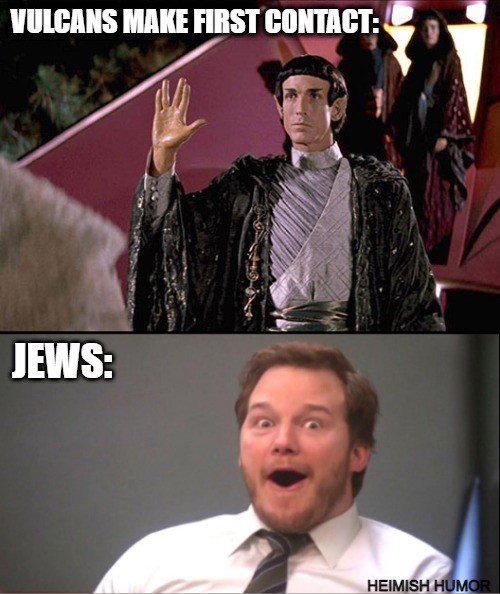
Heimish Humor
37 notes
·
View notes
Text

In September 2009, Leonard Cohen performed at Tel Aviv's Ramat Gan Stadium, his first appearance in Israel since 1985. At the end of the concert, Cohen raised his hands in a rabbinical gesture and recited in Hebrew the birkat kohanim, the priestly blessing, to the crowd.
17 notes
·
View notes
Text
3 notes
·
View notes
Text
We've got a kohen in the synagogue and whenever he does services he does birkat kohanim and it makes me kvell every time, just so ahh
3 notes
·
View notes
Text
Parish Kohanim’s Luminescent Trophies Of Grandeur
Fine art is a process that includes artistic thought on various types of objects and flexes it to society in a meaningful way. Through this process, many artists have created beautiful new art forms, which gave the audience a surreal experience.
Fine arts always stretch the boundaries of human ingenuity and artistically capture profound moments. Pezhman is one such artist who has successfully capture human imagination on canvas. His fine art creations are a masterpiece and collectible for many art-loving people.

Who is Parish Kohanim?
Parish Kohanim is a renowned artist famous for including ingenuity in fine art creation. He was born in Iran in the town of Shiraz. This famous artist belongs to a Jewish family. During Iran and American conflict, he came to New York with just $300 in his pocket.
In Manhattan, he had pursued a career in fine arts. Later he came to San Francisco and settled down in his studio. He was always a fan of Craig Alan Art and use luminescent technology for his fine art creation. All of his art pieces are a masterpiece and they look visually stunning on the canvas.
Life of Parish Kohanim in Iran
The city (Shiraz) where he was born was very rich-in-culture, and it impacted him profoundly when he was young. It was the staging part of his life. However, the political turmoil of that time had deeply impacted him socially. In many interviews, he explained that he was feeling like a second-class citizen in Iran.
Due to his brilliant mind, his parents want to see him as a doctor or a lawyer. However, he always loved art and wanted to pursue it as a career. He came to America to do a major in geology and found the subject very boring. Later he found inspiration in Craig Alan Art and followed it as a career.
Primary features of Parish Kohanim’s art
As a skilful fine art artist, Parish Kohanim has brilliantly used color contras in his creation. For this reason, most of his art capture attention at first glimpse. In every piece of art, he skilfully blended different aspects of life with every brush stroke. Here are some primary features you will notice in his every creation.
· Most of his art is like Craig Alan Artist category
· Bold use of color and contrast on the canvas
· Intricate details of different aspects of life and emotions
· Every art piece is visually appealing to the audience
Famous fine art creation of Parish Kohanim
The best part of Pezhman creation that it does not include Photoshop for visual edit. Instead, Parish Kohanim devotes multiple days to the stage for his portrait creation. The interaction of his work is easily noticeable in his fine art.
Some of his fine art creations like Luminosa, Reflections, White Dahlia, and Lucite chairs are praised for their intricacy details. The portrait he makes reflects different aspects of nature and the inner beauty of these objects. With every piece of art, he reinvents his art and creates unique designs.
Parish Kohanim is one of those few artists who gained fame after lots of struggle. He only gained all of this fame because of his ingenuities in fine arts. Every portrait that he makes reflects the struggle of life and its beauty in a profound way.
As one of the best Craig Alan Artist, many people admire his artwork. He truly inspires a new generation of artists and encourages everyone to uphold artistic values. You can bring his creation to your house or office and increase the aesthetic beauty of the wall. It will also increase your stature by displaying the art to the guests.
0 notes
Note
are hamsas a jewish thing? i see them all over jewish sites and in synagogues but i also see gentiles using/wearing them???
Short answer: Yes, hamsas are a Jewish thing, but they're not exclusively Jewish.
An open palm as a symbol is seen throughout the Middle East, and it is given many names and meanings. There is no consensus as to the origin of the symbol, but considering hand prints are seen even in paleolithic art all across the world, it wouldn't be that hard to see how a hand could become such an important symbol.
In Judaism, hands are often featured in artwork as the two hands of the Kohanim during the Priestly Blessing and as references to God's mighty hand when freeing the Jews from Egypt. Hamsas have been used as Jewish amulets since at least the Middle Ages, and there's evidence of hand symbology being used even earlier. The belief in Ayin Hara (The Evil Eye), which is often tied to Hamsas, is also a very old Jewish belief. It, too, is not an exclusively Jewish belief, but rather a belief common among Middle Eastern and Meditteranean cultures.
Not all Jews use the Hamsa as a symbol, and indeed many frown on it, seeing it as a superstition that is best not touched. However, it has been used for a long time by Sephardi and Mizrachi Jews, as well as more Kabbalistic Ashkenazi Jews.
Because of its appearence in both Jewish and Muslim cultures, the hamsa has become a symbol of Judeo-Islamic unity by some people. In 2009, the Hamsa Flag was envisioned as the flag of a united Israeli-Palestinian state.
In conclusion,
RATING: JEWISH (BUT NOT EXCLUSIVELY)
Further reading about Hamsas, Amulets, and the Evil Eye:
Sagiv, Gadi. “Dazzling Blue: Color Symbolism, Kabbalistic Myth, and the Evil Eye in Judaism.” Numen, vol. 64, no. 2/3, 2017, pp. 183–208. JSTOR, http://www.jstor.org/stable/44505334.
SABAR, SHALOM. “From Sacred Symbol to Key Ring: The Ḥamsa in Jewish and Israeli Societies.” Jews at Home: The Domestication of Identity, edited by SIMON J. BRONNER, Liverpool University Press, 2010, pp. 140–62. JSTOR, https://doi.org/10.2307/j.ctv1rmjz2.8.
Hamsa (Aish.com)
Amulets and Talismans (YIVO encyclopedia)
The Hamsa In Jewish Thought and Practice (Times of Israel)
Hamsa Flag (Ayin Press)
352 notes
·
View notes
Note
Hi! I thought this might be a good question to ask you since you are so knowledgeable. I’m writing an epic fantasy story and I need to do some research on what life was like for Jews right before and after the destruction of the 2nd beit hamikdash because that is the basis of the setting. I would also love some information about the daily life of the kohanim at the time. Could you help me out with some reliable sources? Thanks so much!
Some aspects of Jewish life c. 1st century CE:
Economy:
Large-scale household pottery manufacture
-Pottery manufactured by Jews does not need to be ritually purified
-Certain pots began to be standardized in size, indicating importance of measurements for other industries
Expansion of oil and wine industries (hence the standardized jars)
Culture:
Stone vessels. Varying explanations, but all have to do with maintaining a distinct Jewish identity.
A new type of oil lamp- knife-pared lamp.
Dining rooms for the wealthy.
Lots of Mikvaot
Rock-cut familial burial caves
Display tombs but only in Jerusalem
Jews regarded as distinct ethnicity both by themselves and by the foreign powers
Prayer developing. Prayer distinct from Temple worship had already begun after the destruction of the first Temple, and continued into the second Temple era.
Lots of apocalyptic and messianic cults especially as the destruction of the Temple grew closer.
Spoken language is Aramaic and Hebrew
Synagogues beginning to appear
Strong relationship between the Jews of Israel and the Jews of Babylonia
Lots of Halakhic debates
Corruption within the Kohanim because of the Hasmonean power vaccuum and the Romans appointing the High Priests instead of the Jews.
Sources:
Jewish Life Before the Revolt: The Archaeological Evidence
Ethnicity and Ancient Judaism: Jewish Identities in 1st Century Alexandria and Antioch
Prayer in the Period of the Tannaim and Amoraim
Aramaic Tombstones from Zoar and Jewish Conceptions of the Afterlife
THE ORIGIN OF THE SYNAGOGUE: A RE-ASSESSMENT
אתא אגרתא ממערבא ("An Epistle Came from the West"): Historical and Archaeological Evidence for the Ties between the Jewish Communities in the Land of Israel and Babylonia during the Talmudic Period
Were the Priests All the Same? Qumranic Halakhah in Comparison with Sadducean Halakhah
The Torah of the Jews of Ancient Rome
I'm also tagging @didyoumeanxianity because they have a lot more experience with that era (I'm more biological anthropology than cultural).
Good luck with your novel, it sounds so exciting!!
167 notes
·
View notes
Text
youtube
Breaking news from Jerusalem, Israel, preparations for the Third Temple are accelerating at a breathtaking pace. Join us, as we unveil shocking blueprints and stunning 3D animations that bring the 3rd Jewish Temple to life! Witness the grandeur, the intricate details and a vision of the future of Jerusalem, Israel.
#3rdtemple#thirdtemple#jerusalemtemple#jerusalem#israel#BeitHaMikdash#Kohanim#levites#templepreparations#templemount#walkthebible#ancientisrael#biblicalarchaeology#biblearchaeology#HouseofYahweh#Yahweh#Temple#SecondTemple#herodstemple#arkofthecovenant#westernwall#templeofthelord#bible#scripture#paulbackholer#MaryBackholer#ByFaithMedia#ByFaith#Backholer#holyland
3 notes
·
View notes
Text
Fall Feasts Come to Close, 5783/2022
God's Fall Appointments have come to an end. Here is a recap of events in and around Jerusalem as seen through the eyes of https://www.israel365news.com/
God’s Fall Appointments have come to an end. Here is a recap of events in and around Jerusalem as seen through the eyes of https://www.israel365news.com/
Israel365 was started on January 1, 2012 by Rabbi Tuly Weisz to connect Christians with the Land and the People of Israel, each and every day of the year, according to the verse in Deuteronomy above. Through the important causes we support and…

View On WordPress
#Feast of Booths#Hakhel#Israel365#jerusalem#Jesus Christ#Jubilee#kohanim#Levitical priests#Moses#Sabbatical year#Shemitah#Sukkot#Tabernacles#Temple Mount#water libation
1 note
·
View note
Text
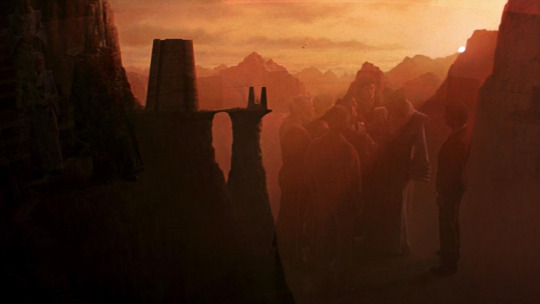

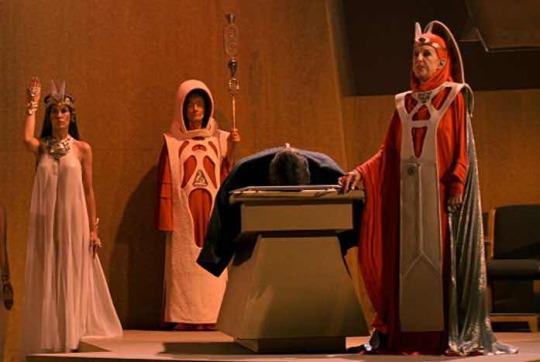

"Bennett informed me that as director, Nimoy had all but imbued Star Trek III with a surfeit of Yiddishkeit. Nimoy began by depicting Spock's homeworld, Vulcan, as a hot, desert planet recognizable as a stand-in for Ancient Israel.
"'Vulcan is really the creation of Leonard's mind,' said Bennett. He noted that Nimoy saw Vulcan as a once-barbaric world peopled by a passionate race who had nearly destroyed themselves early in their history through civil war, yet channeled this energy into pure intellectualism. In so doing, they achieved species survival by becoming the most logical and least war-like of peoples. But despite their rationalism, they are still ruled by ritual and ideological orthodoxy. Even the costumes worn by Vulcan officials in 'Star Trek' were, according to costume designer Robert Fletcher, based on descriptions of the vestments worn by Temple Kohanim that he found in the Bible."
From the article "My Jewish Trek" by Sheldon Teitelbaum
157 notes
·
View notes
Text
SHABBAT ✡️ ALERT ✡️ INSTRUCTIONS for those in ISRAEL
via ISRAEL REALTIME - Connecting the World to Israel in Realtime
(( Note Israel Realtime does not post updates on Shabbat (Israel time) unless life threatening / saving. ))
Chief Rabbinute instructions with details
🔸Erev Shabbat, Parshat Tzav, Leviticus 6:2, where G‑d instructs Moses to command Aaron and his sons regarding their duties and rights as kohanim (“priests”).
Shabbat Times here -> https://www.myzmanim.com/search.aspx
🔸NORTH - Risk MEDIUM-HIGH, particularly in Safed, Meron, Acre, Nahariya, Teveria, and Golan. Precautions required, know your shelter options at synagogue, school, work and home - even shopping.
🔸SOUTH - Risk LOW, occasion rockets from GAZA almost exclusively near-Gaza villages, Sderot and Ashkelon and occasionally Ashdod. Outside of those areas resume normal activities.
🔸EILAT and NEGEV - Risk LOW, but occasional attacks from Yemen. Keep an eye open on shelter options.
❗️This is a LIFE and DEATH WAR - due to Pikuach Nefesh you MUST have a way to receive alerts on Shabbat! Here’s how…
SILENT CHANNELS - Radio & TV stations go “silent broadcast” for Shabbat, ONLY alerts.
No TV or Radio? STREAM IT on phone or computer.
➡️ SILENT TV - Channel 14 - stream https://www.now14.co.il/live/ (doesn’t work with adblocker)
➡️ SILENT RADIO -
• Kol Chai radio - on radio 92.8, 93 and 102.5. - stream https://www.93fm.co.il/radio/players/%d7%a9%d7%99%d7%93%d7%95%d7%a8-%d7%97%d7%99/
• Kol Barama Radio - on radio 92.1, 104.3, 105.7 and 107.6. - stream https://kol-barama.co.il/live/
• Galei Israel - on radio 89.3, 94 and 106.5. - https://www.rlive.co.il/station/galey-israel
➡️ ON COMPUTER - leave a computer open to https://www.oref.org.il/en (only in Israel) - alerts will display and sound on the screen. Turn OFF screen saver, sleep and hibernate so the computer doesn’t turn off.
➡️ VIA APP - leave on phone with red alert app. Set app to YOUR area so it only alerts for your area. We suggest Tzofar Red Alert or Homefront Command - available in Play Store and App Store. IF an alert goes off for your area CLICK THE PHONE TO VERIFY ALERT TYPE - to see if infiltration! Yes, on Shabbat - this is Pikuach Nefesh!
⁉️ ENGLISH SILENT CHANNEL - is there a silent channel in English? NO. But you can use Pikud HaOref ON SCREEN in English, see “ON COMPUTER” option above.
It is a mitzvah to take actions to protect and save and preserve life on Shabbat, not a violation. But ONLY actions which do so.
20 notes
·
View notes
